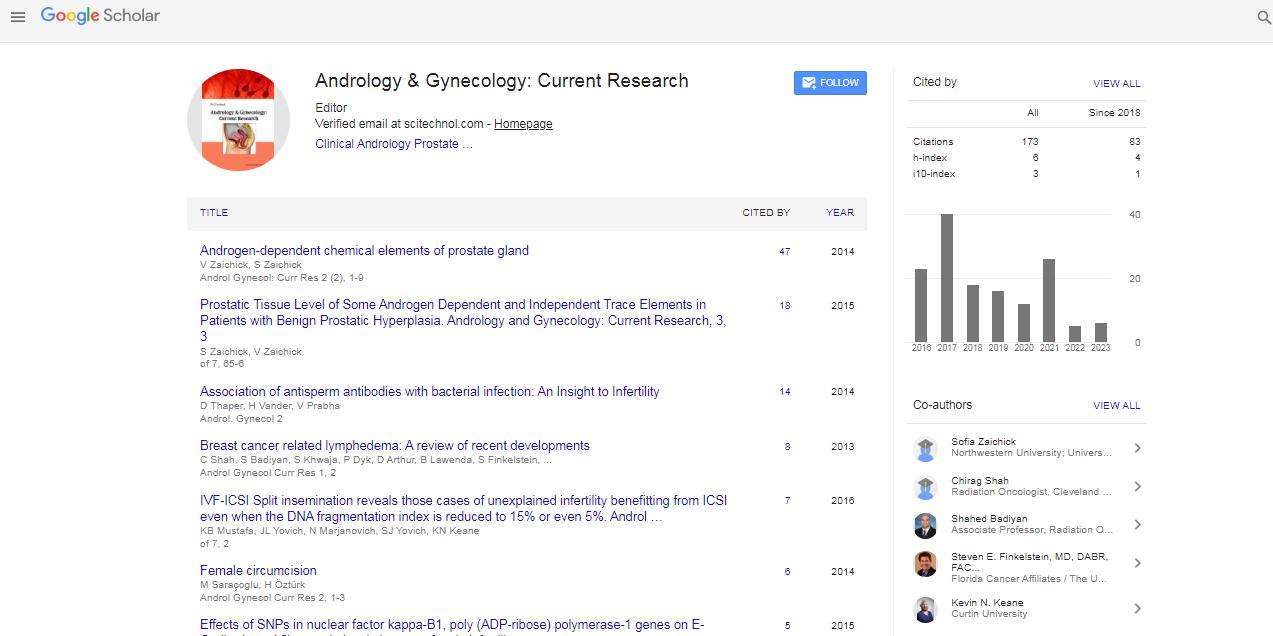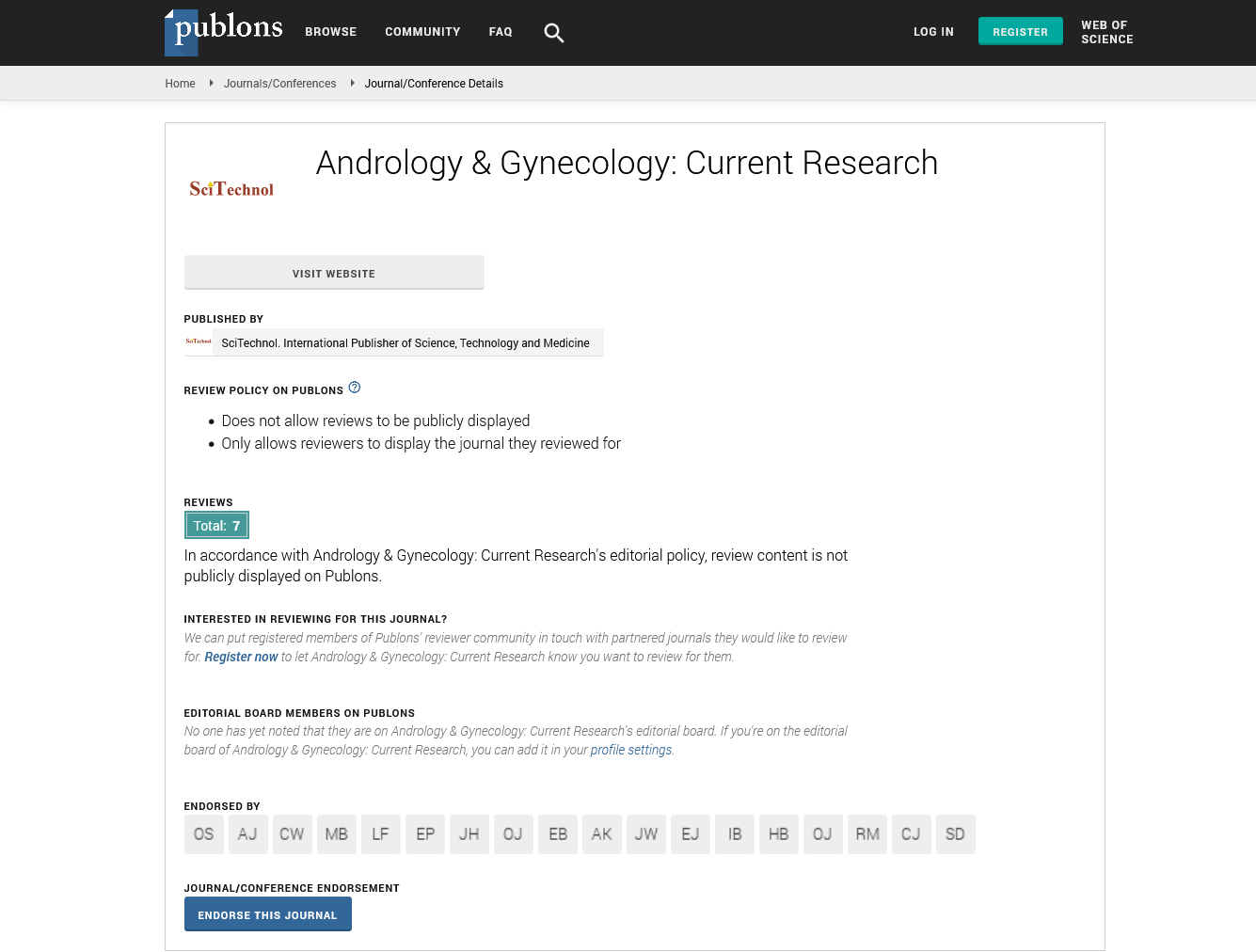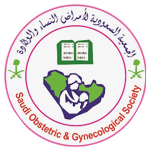Spontaneous pregnancy after conservative treatment of endometrial adenocarcinoma in young woman (case report)
Anna Novosad and Volodymyr Lishchuk
Women health center, Ukraine
: Androl Gynecol: Curr Res
Abstract
We present a clinical case of 21-year-old patient who came to the gynecologist complaining on heavy menstrual discharges and pain during menstruation. During the last two years menstrual cycle was a regular, every 28-29 days, the duration of menstruation was near 6 days. Gynecological and somatic anamnesis of patient is not encumbered, without surgical interventions in the past. During general gynecological examination pathological changes were not found. Ultrasound showed an endometrial hyperplasia and endometrial polyps. Diagnostic hysteroscopy was performed with resection of endometrial polyp and biopsy of the endometrium. In pathological material we received endometrial adenocarcinoma G1. After that were provided additional tests: MRI of the pelvis and X-rays of the chest to eliminate the more severe forms of cancer. Repeated hysteroscopy with resection of endometrium. Pathomorphological conclusion: endometrial adenocarcinoma G1 with squamous metaplasia, staining with hematoxylin-eosin. Variants of treatment and risk of cancer progression in case of preserving fertility were discussed with the patient and on the concilium with oncologist the tactic of organ preserving therapy was chosen. Based on the results of consilium the GnRH agonist therapy was prescribed as a course of injections for 8 months. Aspirate, endometrial biopsy were performed every 3-6 months. Histologically the decidual transformation of the endometrium was defined. After a course of GnRH agonists we used the prolonged progestogen therapy - subcutaneous implants of levonorgestrel. After 6 months during the diagnostic hysteroscopy the biopsy of the endometrium showed that the most of the glands were presented as atrophic. After progestin treatment for 2 years histological result: Focal glandular endometrial hyperplasia type "iron in iron" moderate cystic expansion of individual glands. Considering the positive trend of progestin therapy for 3.5 years it was decided to remove the implant and to transfer the patient to combined oral contraceptives. During the month break after removal of the implant the spontaneous pregnancy has occurred.
 Spanish
Spanish  Chinese
Chinese  Russian
Russian  German
German  French
French  Japanese
Japanese  Portuguese
Portuguese  Hindi
Hindi 


